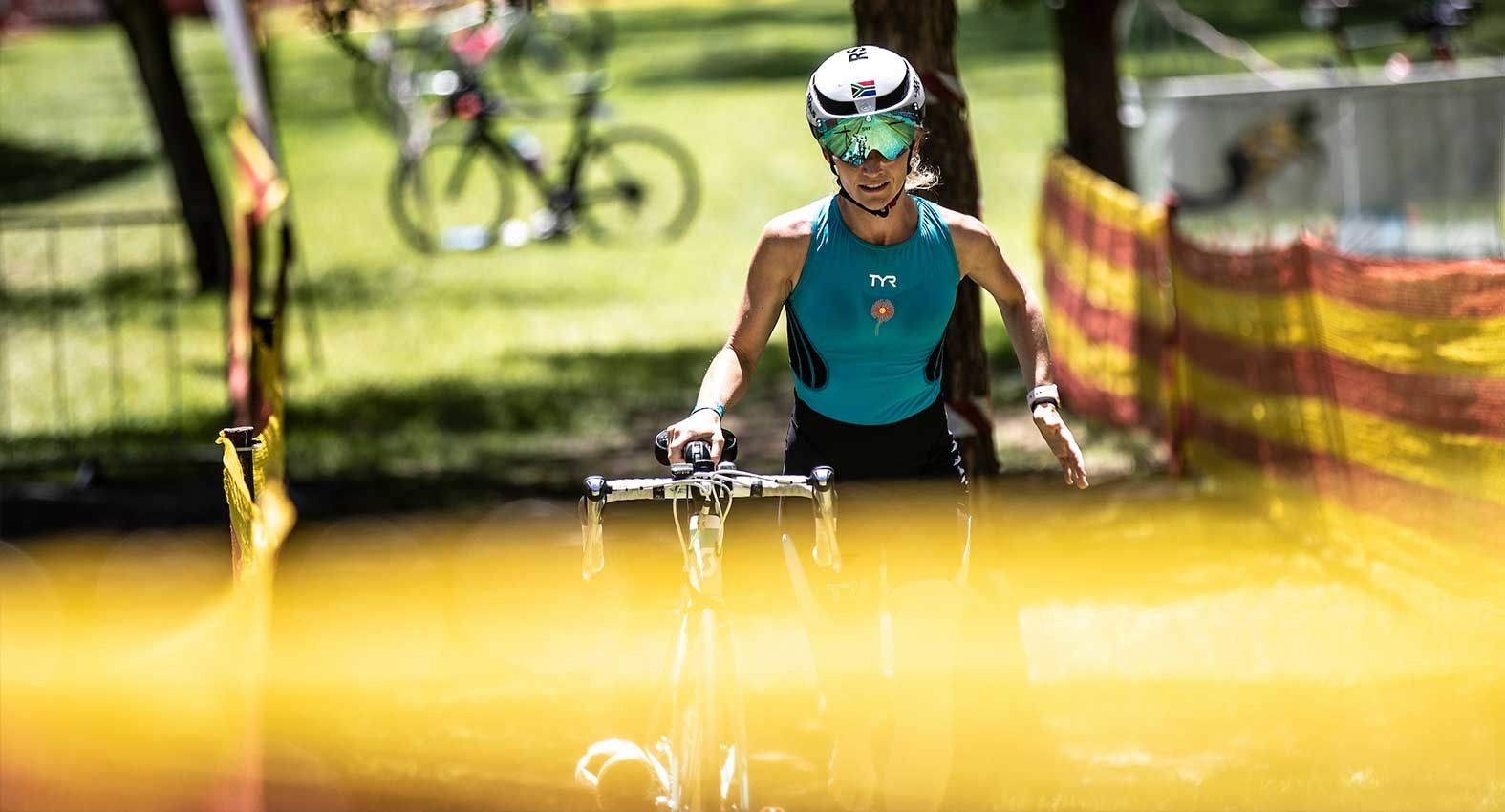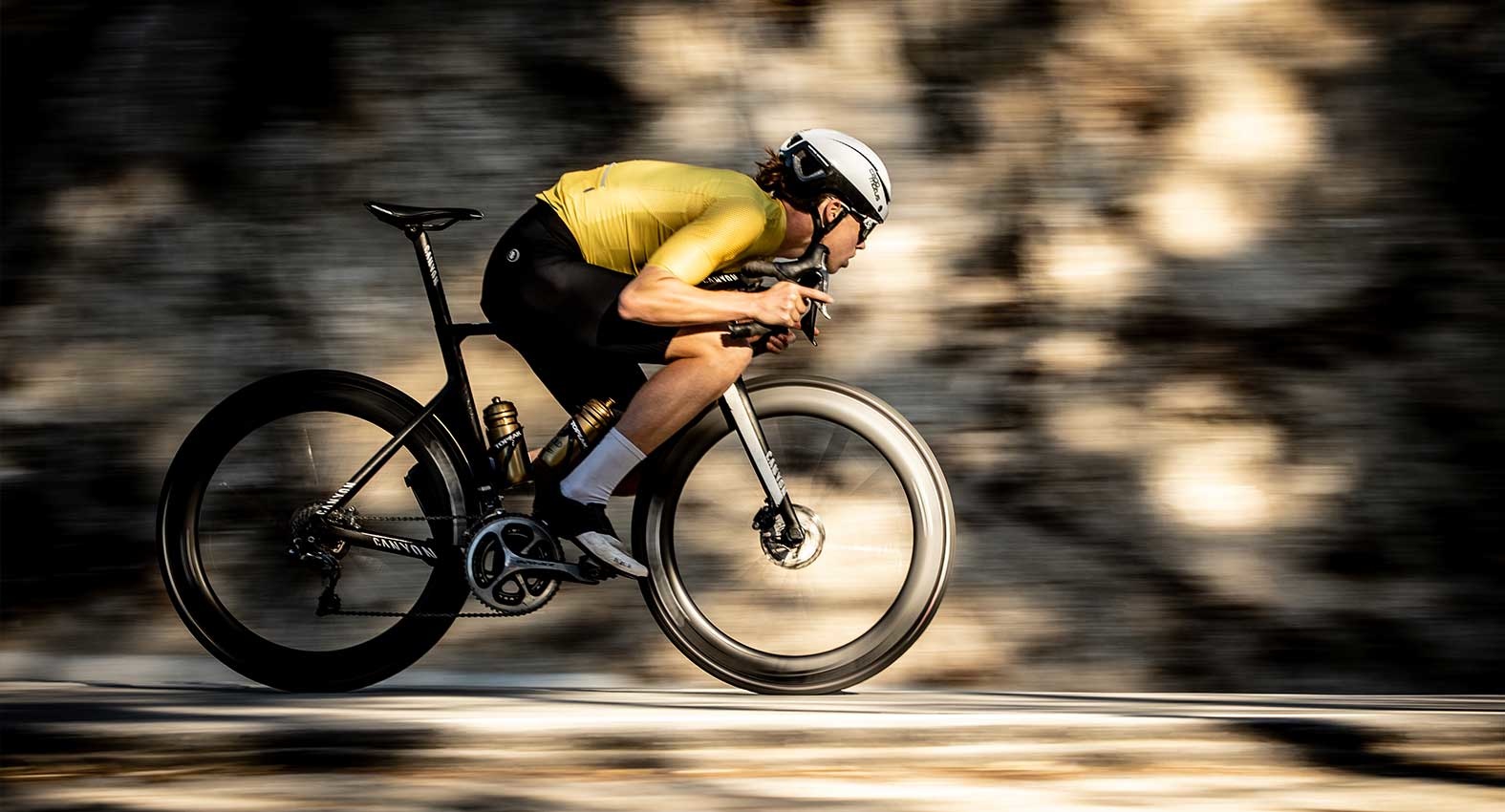Choosing which helmet competing with is a real dilemma for cyclists, triathletes or ironman participants: Would you go for a standard road helmet, an aero road helmet or a full aero helmet? In this video, Global Triathlon Network (GTN) raises this very question, and gets to specific conclusions according to different factors, suggesting an intermediate option… Which is exactly what the Cadomotus Omega is!
Not doing things by halves, presenters of GTN Fraser Cartmell and Mark Threlfall set out for a helmet comparison at the Geraint Thomas Velodrome in Wales. The first option, the standard road helmet, described as “very lightweight and with lots of vents for comfort and coolness,” is mentioned briefly at the beginning of the video as a possible choice “if your goal is to have fun, enjoy your triathlon and speed is not really a consideration.” Fraser and Mark do not elaborate longer on the road helmet, concluding that “it’s light, comfortable, the cheapest of the lot. It’ll keep your head safe, and if you choose a good one, you'll barely even know you're wearing it. You can stop watching now and enjoy your triathlon.” GTN however sets it aside as a racing option because of its poor aerodynamics results.
Testing for weight, ventilation, comfort and speed
With only two options remaining, the aero and the full aero helmet, GTN now begins the test with a run of 10 laps around the Welsh track, holding at 300 watts. They focus on four key areas: weight, time saving, comfort and head temperature.
The two presenters are quick to agree on weight. The aero helmet weights 250 grams, while the full-aero helmet weighs 370 grams. Ostensibly not much of a difference, but as they stress, “we’re adding that to our heads that’s supported by our necks for five, six, or seven hours […] that can be quite significant.”
The difference in head temperature also does not seem huge at first glance, with 37.61℃ for the aero helmet versus 37.88℃ for the full aero helmet. But again, time plays an important role, and small differences can end up making a big difference during a five, six-hour bike ride in an Ironman. It is not so much the actual temperature but “the subjective feeling of feeling hotter,” because “if your head feels like it’s cooking in the helmet, it’s not going to be comfortable, and comfort is a big factor.” Thus, the full aero helmet is less comfortable because of the temperature, and also because of its shape, requiring you to “stay in the aerodynamic position […] so you don't have the same flexibility.” GTN could “definitely tell that even in this short 10-minute test it's less comfortable.”
Of course, what competitive athletes look at above all else is the time factor. They are willing to sacrifice comfort if necessary, and would end up with the full aero helmet if they consider that the time saved makes up for those heat and comfort penalties. In order to test this time factor, Mark and Fraser of GTN both did redid a 10-lap run on the cycling track with the full aero helmet. They either saved 4 watts for the same time, or saved 3 seconds for the same watts. Although it doesn’t seem like much, if you expand it to an Iron Man, that is 3 minutes and 26 seconds, “which is certainly not insignificant.” They do, however, add the fair comment that they were able to stay in the perfect position for the 2.5 km of the test, thus getting the maximum gains. “You won't be able to stay in the aero position the whole way,” they explain. “The reality is also that, if you are turning your head a lot, this bigger helmet at the wrong angle may actually be less aerodynamic than the small aero road helmet when it’s turned sideways.”

The Omega: aerodynamic and comfortable
“Which helmet you choose depends on the race you're doing, your riding style and your goals,” GNT says, leaving the viewers with the question of whether they should opt for the uncomfortable full aero helmet “for the sake of a few marginal time gains.” …Unless you hope to win, “in which case you absolutely need the fastest helmet, and it comes with a bonus of looking really cool.”
But is it so black and white? The testers themselves point out in a side note that there are helmets that exist between the aero and the full aero helmet, blurring the lines and offering interesting compromises. And that is exactly where the Cadomotus Omega sits: it offers comfort similar to the previously discarded standard road helmet, and aerodynamics close to those of the full aero helmet!
Walk through the main conclusions of the test in the video, and you will see that the Cadomotus Omega provides the missing puzzle piece for each specific problem. The WEIGHT? At 290 grams, the Omega is barely heavier than the regular aero helmet of 270 grams, and considerably lighter than the full aero helmet of 350 grams. The HEAT? The three air channels on the inside of the helmet, provided through vents shielded with honeycombs, offer maximum cooling for your head without sacrificing air resistance. In short, the Omega provides comparable cooling to the regular road helmet – which GTN did not even include in the test due to its lack of aerodynamics – and easily beats the aero and certainly the full aero helmet in this field.
And then, there is the SPEED factor: how to optimally save time? You cannot keep the same position on the bike for 5 hours, as GTN stresses out. If you look to the side or ride uphill, a full aero helmet might even get in the way, especially are part of the “athletes who move their heads a bit more or just [have] different riding styles,” the testers also mentioned. The Cadomotus Omega helmet is the only helmet that has been tested fully, and turns out to be incredibly aerodynamic regardless the position you are in. This is where our knowledge from ice skating comes into action: skaters have different builds, different techniques, experience air currents differently, and want to remain aerodynamic in a race, in both curves and straights. As exhaustive tests by TU Delft and TU Eindhoven have shown, the Omega is in the lead by far. It succeeds, quite remarkably, at both sprint and long distances.

Since the Omega doesn't force you to stay permanently in the same position, as a bonus, you also get the necessary COMFORT, which in turn pays off, providing a more relaxed cycling position and better morale.
GTN opens the video stating that “the ideal bike helmet is lightweight, comfortable, aerodynamic and has great ventilation”, before adding that “the perfect triathlon helmet doesn’t exist, no yet anyway, so you have to make some compromises, you need to weigh what’s important to you.” And yet, with the Cadomotus Omega, you hardly have to make any concessions, making that perfect triathlon helmet very much within reach! And last but not least, the cool-look bonus also comes with the Omega, and perhaps even surpasses that of the full aero helmet!

 Triathlon
Triathlon
 Outlet!
Outlet!
 CádoWiki
CádoWiki
 About Us
About Us









